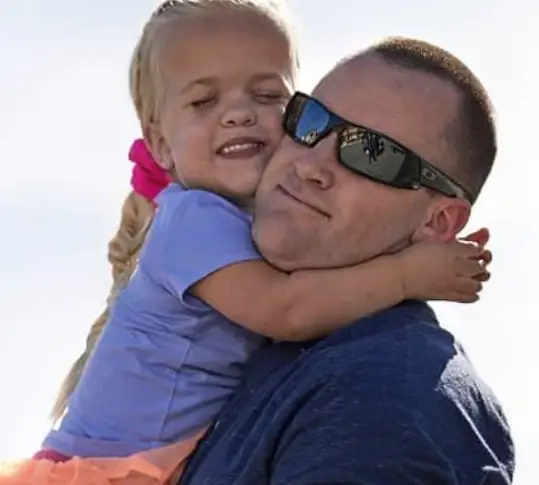Achondroplasia is the most common form of dwarfism, characterized by short stature with distinct skeletal features. As a genetic disorder, it affects both children and adults, impacting their physical development and overall quality of life. At Children’s Hospital Colorado, under the expertise of Dr. Klane K. White, significant strides are being made in understanding and treating achondroplasia, aiming to improve the lives of those affected by this condition.
Understanding Achondroplasia
Achondroplasia is a genetic condition resulting from a mutation in the FGFR3 gene, which is responsible for regulating bone growth. This mutation leads to abnormal cartilage formation, particularly in the long bones of the arms and legs, resulting in short stature. Individuals with achondroplasia typically have an average-sized torso with shorter limbs, a larger head (macrocephaly), and characteristic facial features.
Key Features of Achondroplasia
- Short Stature: Adults with achondroplasia usually reach heights of around 4 feet.
- Distinct Facial Appearance: Prominent forehead and a flattened bridge of the nose.
- Spinal Curvature: Conditions such as lordosis or kyphosis are common.
- Joint Flexibility: Increased flexibility in the elbows and knees.
- Possible Hearing Loss: Due to frequent ear infections.
Symptoms of Achondroplasia
Recognizing the symptoms of achondroplasia is crucial for early diagnosis and intervention. Symptoms usually become apparent at birth or shortly thereafter and include:
- Short Limbs: Especially the upper arms and thighs.
- Large Head: With a prominent forehead and midface hypoplasia.
- Spinal Abnormalities: Including bowed legs and spinal stenosis.
- Developmental Delays: In motor skills such as sitting and walking.
- Distinctive Facial Features: Including a small jaw and a prominent forehead.
Lifespan and Health Considerations
Individuals with achondroplasia typically have a normal life expectancy. However, certain health challenges may arise, necessitating ongoing medical attention:
- Obesity: Increased risk due to reduced physical activity.
- Hydrocephalus: Accumulation of fluid in the brain, which may require surgical intervention.
- Sleep Apnea: Breathing difficulties during sleep due to restricted airways.
- Joint Problems: Osteoarthritis can develop earlier in life.
- Spinal Canal Stenosis: May lead to pain or neurological issues.
Advances in Treating Achondroplasia
The treatment of achondroplasia has evolved significantly, focusing on enhancing quality of life and addressing specific health concerns. Dr. Klane K. White and his team at Children’s Hospital Colorado emphasize a multidisciplinary approach to care, involving:
Medical Interventions
- Growth Hormone Therapy: Although not universally effective, it may promote some increase in height.
- Surgical Procedures: Corrective surgeries for spinal stenosis, bowed legs, or cranial decompression in cases of hydrocephalus.
- Orthopedic Management: Bracing and physical therapy to support joint health and mobility.


Emerging Therapies
Recent research is exploring targeted therapies aimed at the genetic and molecular basis of achondroplasia:
- FGFR3 Inhibitors: Medications designed to block the overactive FGFR3 receptor, potentially normalizing bone growth.
- Gene Therapy: Investigational approaches to correct the genetic mutation responsible for achondroplasia.
Supportive Care
Supporting individuals with achondroplasia involves addressing both physical and psychological needs:
- Physical Therapy: To enhance mobility and strength.
- Occupational Therapy: Assisting with daily activities and adapting environments.
- Psychological Support: Counseling and support groups to manage emotional and social challenges.
Living with Achondroplasia
Living with achondroplasia presents unique challenges, but with the right support and medical care, individuals can lead fulfilling lives. Education, employment, and social integration are key areas where tailored strategies can make a significant difference.
Education and Awareness
Educators and peers should be informed about achondroplasia to foster an inclusive environment. Accommodations such as accessible furniture and modified physical education activities can help students succeed academically and socially.
Employment Opportunities
Adults with achondroplasia can excel in various professions. Workplace accommodations, such as adjustable desks and accessible facilities, support their productivity and comfort.
Social Integration
Building a supportive community is essential. Participation in support groups and advocacy organizations can provide emotional backing and promote awareness about achondroplasia.
The Role of Healthcare Providers
Healthcare providers play a pivotal role in managing achondroplasia. Comprehensive care involves regular monitoring, early intervention for complications, and coordination among specialists. Dr. Klane K. White emphasizes personalized care plans tailored to each individual’s needs, ensuring optimal health outcomes.
Multidisciplinary Care Team
A holistic approach involves various healthcare professionals, including:
- Geneticists: For diagnosis and genetic counseling.
- Orthopedic Surgeons: For surgical interventions and bone health management.
- Neurologists: Addressing neurological complications like spinal stenosis.
- Pulmonologists: Managing respiratory issues such as sleep apnea.
- Physical and Occupational Therapists: Enhancing mobility and daily functioning.
Future Directions in Dwarfism Treatment
The landscape of achondroplasia treatment is rapidly evolving, with promising advancements on the horizon:
Gene Editing Technologies
CRISPR-Cas9 and other gene-editing tools hold potential for correcting the FGFR3 mutation at the genetic level, offering hope for a targeted cure in the future.
Personalized Medicine
Advancements in genomics and personalized medicine enable treatments tailored to an individual’s genetic makeup, improving efficacy and reducing side effects.

Enhanced Surgical Techniques
Minimally invasive surgical procedures and improved techniques aim to reduce recovery times and enhance outcomes for spinal and orthopedic interventions.
Resources and Support
Navigating life with achondroplasia can be challenging, but numerous resources are available to provide support and information:
- Support Groups: Connecting with others facing similar challenges.
- Educational Materials: Informative guides and literature on achondroplasia.
- Advocacy Organizations: Promoting awareness and advocating for policies that support individuals with dwarfism.
Conclusion
Achondroplasia presents unique challenges, but with the right medical care, support systems, and advancements in treatment, individuals can lead healthy and fulfilling lives. Dr. Klane K. White and the dedicated team at Children’s Hospital Colorado are at the forefront of these efforts, continually exploring new therapies and approaches to improve outcomes for those with dwarfism.
Take the Next Step Towards Better Care
If you or a loved one are affected by achondroplasia, our specialists are here to help. Schedule a consultation with Dr. Klane K. White today to discuss personalized treatment options and receive comprehensive care tailored to your needs.
_____________________________
Disclaimer: This content is intended for informational purposes only and does not constitute medical advice. Always consult with a qualified healthcare provider for medical diagnosis and treatment.
Listen on Podcast
Did you like your experience?
Please leave us a Testimonial HERE if you have a Google account.
Your word helps get our word out to more people.
Thank you in advance!!


